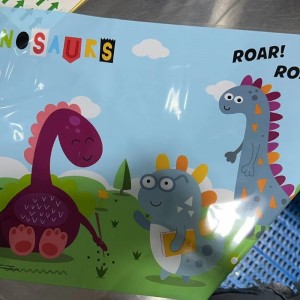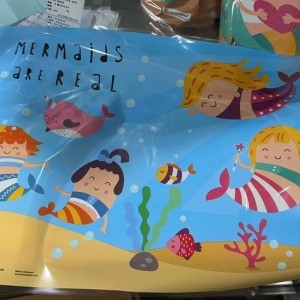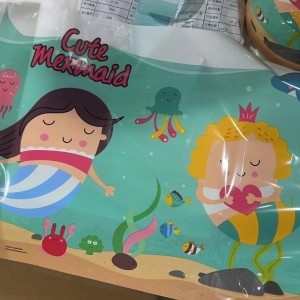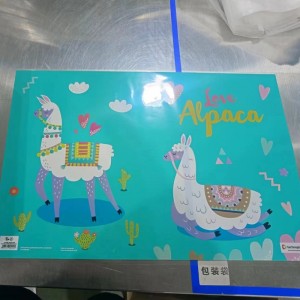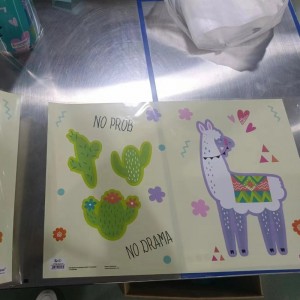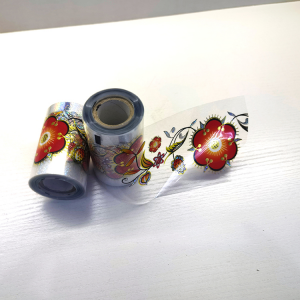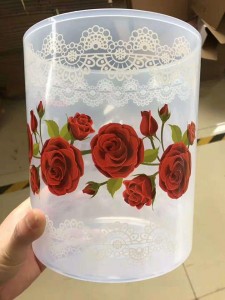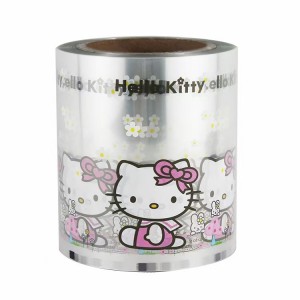Transfer paper&film pet heat transfer film for plastic printing and decoration
Product description
Heat transfer film comes in a variety of colors, patterns, and finishes, from solid colors to prints and holographics. It can be cut into various shapes and sizes using a vinyl cutter or plotter and then applied to the fabric using a heat press.
One of the advantages of using heat transfer film is the ease with which it can be applied to fabrics, making it a popular choice among DIY enthusiasts and businesses alike. It also offers a durable and long-lasting design that can withstand repeated washings without fading or peeling.
Furthermore, heat transfer film can be used on a wide variety of fabrics, including cotton, polyester, and blends, which makes it a versatile option for many different types of projects.
Overall, heat transfer film is a versatile and practical choice for anyone looking to create custom designs on fabrics and garments. Its ease of use, durability, and versatility make it an excellent choice for both personal and commercial use.
Product show




Thermal/heat transfer technology is widely used in:Coatings, lubricant packaging, household goods, food packaging, cosmetics, stationery, crafts, toys and other industries.
Production process

Heat transfer film is an essential material for the printing and decoration industry. The production process of heat transfer film involves several steps that include:
1. Raw material selection: The first step in heat transfer film production is the selection of high-quality raw materials. The raw materials used in the production of heat transfer films include a release film, transfer paper, surface protective film, and ink.
2. Printing: After the raw materials are selected, the design is printed onto the film using a specialized printing machine. The printing process involves the use of special inks that will adhere to the transfer paper.
3. Lamination: Once the design is printed, the film is then laminated. The transfer paper and release film are fastened together with heat and pressure to create a smooth surface.
4. Cutting: After lamination, the heat transfer film is cut into the desired shapes and sizes using cutting machines.
5. Inspection: Once the heat transfer film is cut, it is thoroughly inspected to ensure that it meets the required quality standards. Any defective or imperfectly printed films are discarded.
6. Packing and Shipping: After the heat transfer film passes the inspection process, it is packed and shipped to the customers.
Overall, the production process of heat transfer film requires a high level of precision and attention to detail. The quality of the raw materials and the printing process are essential to ensuring that the final product is of excellent quality. With proper care and attention, the production process of heat transfer film can be a highly efficient and rewarding endeavor.
Company profile
Decai Honorise is a leading manufacturer of heating transfer field, one-stop service comprehensive enterprise. The products involves the following major aspects:High-precision hot stamping silicone rubber roller and wheel、gravure printing rubber roller and various industrial rubber rollers,Thermal transfer film labels and in-mold labeling,Heat transfer machine and hot stamping machine.Integrating production, sales and R&D together. In strict accordance with printing industry standards for production and management. We're own scientific formula, precise processing methods and superb grinding technology, we provide high-quality products with advanced production equipment and strong technical force.


FAQ
1.Are you a manufacturer?
Yes, we can provide you samples for quality checking. Please let us know your requirements, then we can arrange samples according to your requirements. Our samples are free, but the delivery charge is on your side.3.How can we guarantee quality?
Always a pre-production sample before mass production;Always final Inspection before shipment.
4.What is "heat transfer printing' ?
Heat transfer printing utilizes high-quality gravure printed on a clear carrier that are permanently bonded to a part by the heat and pressure of the heat transfer process. Since heat transfer label are preprinted, multicolor images are transferred to the part in one pass.
5.How to use heat transfer printing ?
1.firstly you must have a heat transfer printing machine, we also produce this machine
3) your product should have smooth surface(flat or round conical shape)
6.This is the first time to buy the packaging, what information I need to provide in order to get a price?
1)Material of your product
2)Size of the film /your product
3)do you have own orginal design?
4) Order quantity
5)If possiable pls send sample product to us7.How can we contact you as soon as possible?
We are always available on Alibaba.com, WhatsApp, Wechat. You can also reach us by email. You are welcome to send us any questions anytime and we will reply you.
Email:rubber_printing03@126.com
Whatsapp/Wechat:+8618700958737


